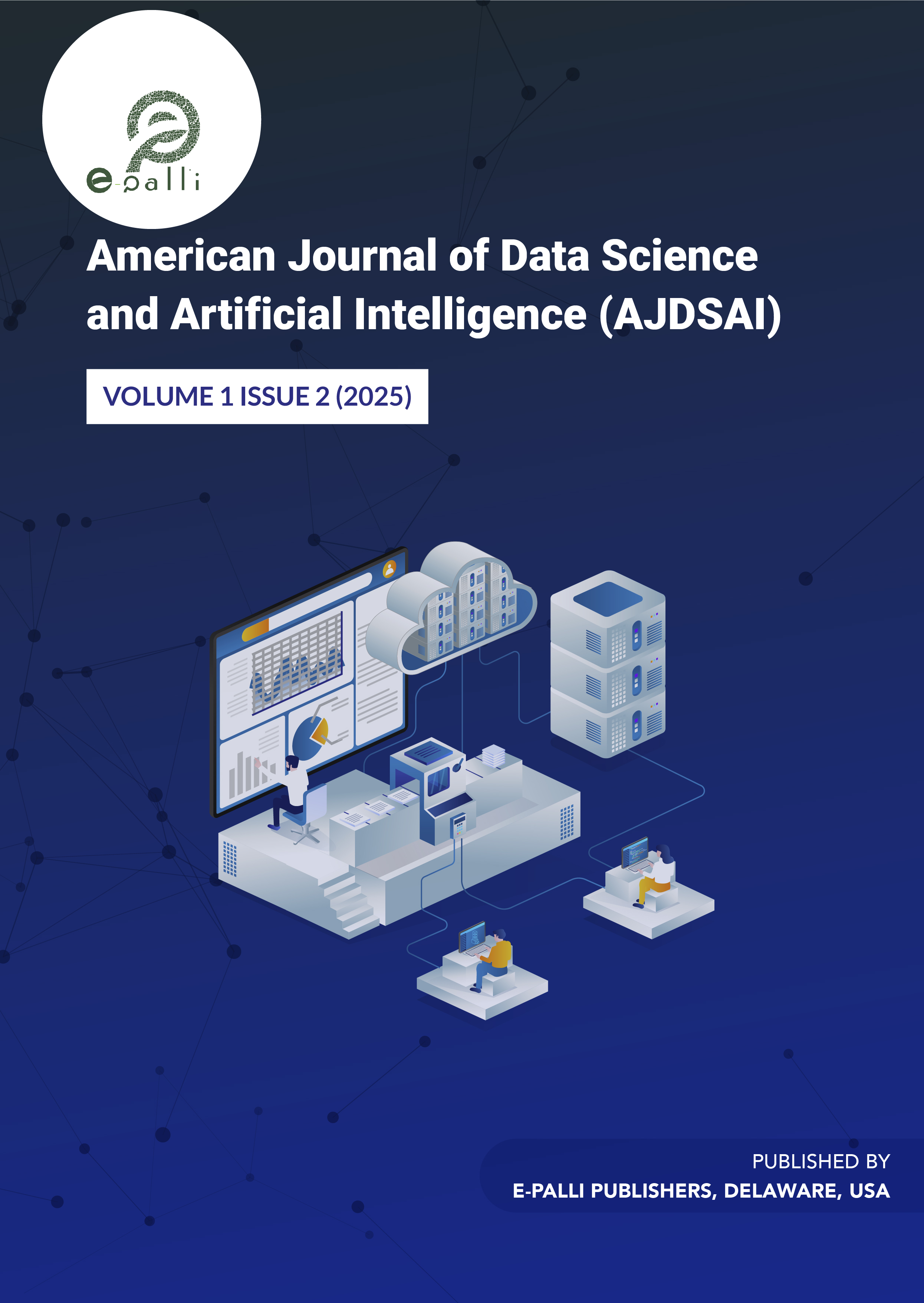Artificial Intelligence and Education in Nepal: A Mixed-Methods Study on Student Adoption and Learning Outcomes
DOI:
https://doi.org/10.54536/ajdsai.v1i2.4763Keywords:
Artificial Intelligence, AI Adoption, Educational Technology, LearningAbstract
AI is transforming education globally, but in Nepal, it remains an under-researched area. While global research focuses on the potential of AI for personalization, efficiency, and decreasing disparities, limited information is available on how AI is being implemented in Nepal, particularly in the urban-rural educational gap. This study employed a mixed-methods strategy to probe into the importance of AI for students’ learning. Quantitative data was collected via surveys of 150 students in urban and rural school and college setups, while qualitative data was collected via 11 in-depth interviews with teachers, administrators, and AI experts. Stratified random sampling was utilized to ensure representativeness, while descriptive statistics and inferential statistics were combined with thematic analysis to analyze measurable outcomes as well as context-dependent perceptions. Results indicate that 90.7% of students had knowledge about AI, with 33.3% using AI tools weekly and 30% daily, mostly through smartphones and laptops. Students from urban locations were much more exposed compared to rural students (124 of 135 vs. 12 of 15), indicating an ongoing digital divide. Students reported a slightly higher usage by males compared to females, but both groups acknowledged the benefit of AI for education. Notably, 62.7% of the surveyed respondents believed that AI could reduce education inequality, while issues such as lack of proper infrastructure, low digital literacy, and inadequate teacher training remain overriding concerns. The added value of the research is in situating AI adoption in Nepal, highlighting imbalance of access and utilization, and advocating culturally and language-specific AI tools. Its policy contribution is demonstrated by way of policy recommendations for investments in digital infrastructure, teacher capacity building, integrating AI literacy in curricula, and facilitating access for rural students. Overall, this study suggests that while AI possesses unbelievable potential to transform Nepalese education, its achievement will ultimately depend on sustainable, fair, and ethically guided implementation.
References
Asif, M., Iqbal, A., Ahmed Siddiqui, I., Rose, N., & Ali Shah, S. M. (2025). The impact of artificial intelligence literacy on the expected outcome of AI tool’s integration into higher education institutions: A systematic review of EFL departments. American Journal of Education and Technology, 4(2), 84–92. https://doi.org/10.54536/ajet.v4i2.3977
Bit, D., Biswas, S., & Nag, M. (2024). The Impact of Artificial Intelligence in Educational System. International Journal of Scientific Research in Science and Technology, 11, 419–427. https://doi.org/10.32628/IJSRST2411424
Chen, L., Chen, P., & Lin, Z. (2020). Artificial Intelligence in Education: A Review. IEEE Access, 8, 75264–75278. IEEE Access. https://doi.org/10.1109/ACCESS.2020.2988510
Copeland, B., & Proudfoot, D. (2007). Artificial Intelligence. In The Oxford Handbook of Philosophy of Cognitive Science (pp. 429–482). https://doi.org/10.1016/B978-044451540-7/50032-3
Filgueiras, F. (2023). Artificial intelligence and education governance. Education, Citizenship and Social Justice, 17461979231160674. https://doi.org/10.1177/17461979231160674
Holmes, W., & Tuomi, I. (2022). State of the art and practice in AI in education. European Journal of Education, 57(4), 542-570. https://doi.org/10.1111/ejed.12533
Huang, J., Saleh, S., & Liu, Y. (2021). A Review on Artificial Intelligence in Education. Academic Journal of Interdisciplinary Studies, 10, 206. https://doi.org/10.36941/ajis-2021-0077
Kamalov, F., Santandreu Calonge, D., & Gurrib, I. (2023). New Era of Artificial Intelligence in Education: Towards a Sustainable Multifaceted Revolution. Sustainability, 15(16), Article 16. https://doi.org/10.3390/su151612451
Khatri, B. B., & Karki, P. D. (2023). Artificial Intelligence (AI) in Higher Education: Growing Academic Integrity and Ethical Concerns. Nepalese Journal of Development and Rural Studies, 20(01), Article 01. https://doi.org/10.3126/njdrs.v20i01.64134
Knox, J. (2020). Artificial intelligence and education in China. Learning, Media and Technology, 45(3), 298–311. https://doi.org/10.1080/17439884.2020.1754236
Lameras, P., & Arnab, S. (2022). Power to the Teachers: An Exploratory Review on Artificial Intelligence in Education. Information, 13(1), Article 1. https://doi.org/10.3390/info13010014
Liekum, L. B. (2025). Harnessing artificial intelligence in teaching Ghanaian colleges of education in the 21st century: Enhancing quality teaching, student research, and learning abilities. American Journal of Multidisciplinary Research and Innovation, 4(3), 191–204. https://doi.org/10.54536/ajmri.v4i3.4457
Mao, J., Chen, B., & Liu, J. (2023). Generative Artificial Intelligence in Education and Its Implications for Assessment. TechTrends, 68. https://doi.org/10.1007/s11528-023-00911-4
Ouyang, F., & Jiao, P. (2021). Artificial Intelligence in Education: The Three Paradigms. Computers and Education: Artificial Intelligence, 2, 100020. https://doi.org/10.1016/j.caeai.2021.100020
Raza, F. (2023). AI in Education: Personalized Learning and Adaptive Assessment. https://doi.org/10.13140/RG.2.2.24796.77446
Saputra, I., Astuti, M., Sayuti, M., & Kusumastuti, D. (2023). Integration of Artificial Intelligence in Education: Opportunities, Challenges, Threats and Obstacles. A Literature Review. Indonesian Journal of Computer Science, 12. https://doi.org/10.33022/ijcs.v12i4.3266
Zhai, X., Chu, X., Chai, C. S., Jong, M. S., Istenic, A., Spector, M., .... Li, Y. (2021). A Review of Artificial Intelligence (AI) in Education from 2010 to 2020. Complexity, 2021(1). https://doi.org/10.1155/2021/8812542
Downloads
Published
How to Cite
Issue
Section
License
Copyright (c) 2025 Sujan Poudel, Shyam Maharjan

This work is licensed under a Creative Commons Attribution 4.0 International License.



